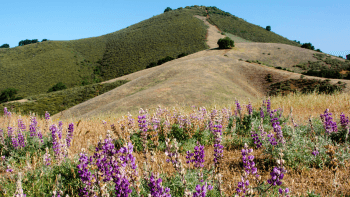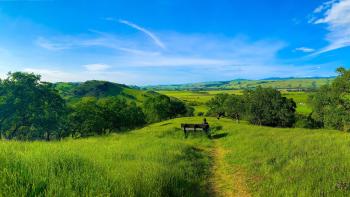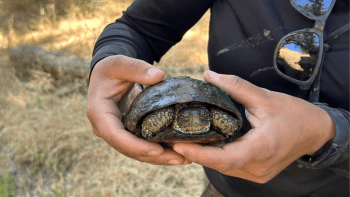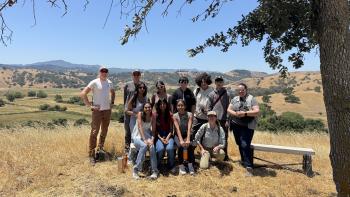Weir Wetland News
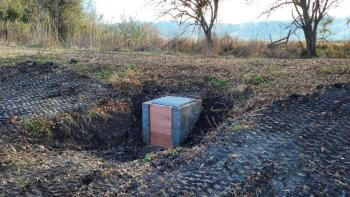
The cycle of nature continues, and in the winter months, water breathes life into Coyote Valley. Just before the December (2023) rainfall, the dedicated staff of the Open Space Authority installed a special “weir” at Spreckels Wetland to assist in the revitalization of a historic wetland in Coyote Valley. Keep reading to learn how this project is helping make the best use of water to benefit people, wildlife and the natural and working lands that sustain us.
About Spreckels Wetland
Spreckels Wetland is a 3.65-acre wetland that wraps around the eastern and southern sides of Spreckels Hill, immediately south of Bailey Avenue and east of Fisher Creek in North Coyote Valley. The wetland is supported mainly by a high groundwater table, which occurs after big rain years, especially in the north and western parts of Coyote Valley.
This area was once part of the southern end of the ~1,000-acre Laguna Seca, or “dry lagoon” from the Spanish. Each winter when it’s wet, the area once hosted tens of thousands of birds before drying and shrinking into a much smaller wetland. Perhaps that is the origin of the oxymoronic name: ‘dry’ in the summer and a ‘lagoon’ in the winter.
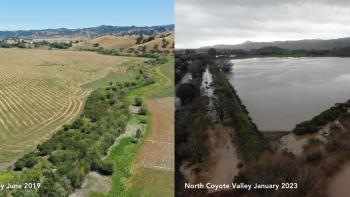
“The protection of wetlands like Spreckels is essential,” says Rachel Clemons, Open Space Authority Watershed Restoration Specialist. "Protecting and restoring this wetland will help reduce erosion, minimize downstream flooding, protect native plant and animal diversity, and will improve water quality by absorbing nutrients and pollutants.”
Historically Laguna Seca, (including the Spreckels Wetland) was once home to robust populations of birds, amphibians and other wildlife that are now at risk or facing decline.
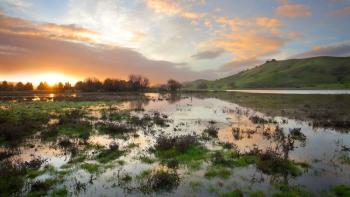
Why a weir?
The weir installation is part of the Spreckels Wetland Cleanup and Enhancement Project, which began in 2021 in partnership with the Bonneville Environmental Foundation. The project's goals are to enhance and restore important habitat and water resources under threat due to invasive species, litter and poor drainage.
Over the years, a variety of human activity has changed the way water moves around Laguna Seca. Although this unique wetland is no longer functioning in its original state, it continues to exist.
At some point in the past, a culvert with a diameter of 18 inches was installed to allow water from the wetland to flow beneath an earthen levee into Fisher Creek. The culvert controlled the elevation and flow rate at which the wetland drained to the creek.
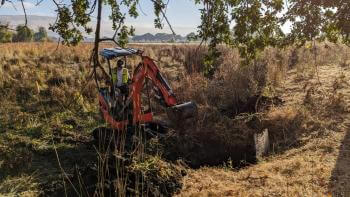
With the new weir in place, water is no longer automatically drained. Instead, more water can be kept in the wetland for longer to benefit wetland plants and animals, and those living in communities downstream.
This small, yet impactful project demonstrates a science-driven approach to recreating historic wetlands while also providing valuable insights for larger planning initiatives.
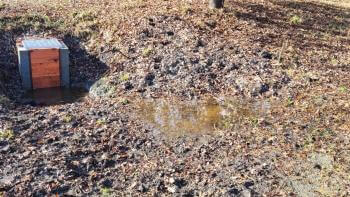
How does the weir work?
The new, concrete weir includes “flashboards” that can be added or removed to manually adjust the water surface elevation in the wetland. With the addition of a flashboard, the wetlands store 1’ more of water depth. Take a flashboard away and the wetlands lose 1’ of water depth.
For now, the boards will be kept in to allow deeper ponding within the lowest portions of the wetland. This will also allow its wetted perimeter to expand into areas dominated by nonnative invasive plants like stinkwort that do not survive in saturated conditions.
"I have found projects like this one are something I can control and do good for wildlife, watershed, ground water recharge, flood control, people's quality of life, and other aspects that will eventually appear as this area seasonally floods once again.”
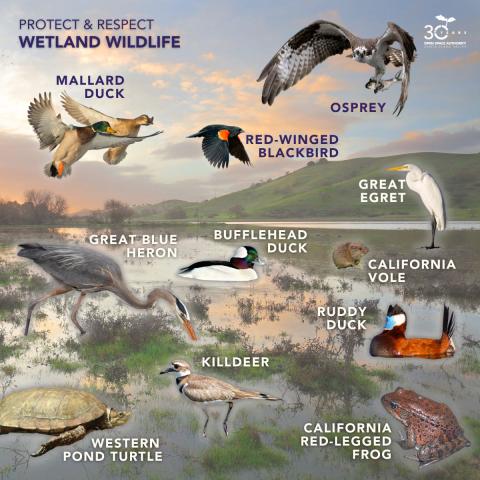
The restoration of Fisher Creek and Laguna Seca is a significant and continuous effort that is guided by the Coyote Valley Conservation Areas Master Plan.
As Open Space Authority Field and Conservation teams continue removing scattered litter throughout this important wetland, they will closely observe and assess the impact of these improvements on the native plant and animal populations.
This monitoring phase is crucial because it will provide valuable insights for the ongoing management of the site and bigger projects to come.
Stay tuned to see the results!
To learn more about local wetlands and their importance, watch our virtual program, "Wonderful Wetlands."
